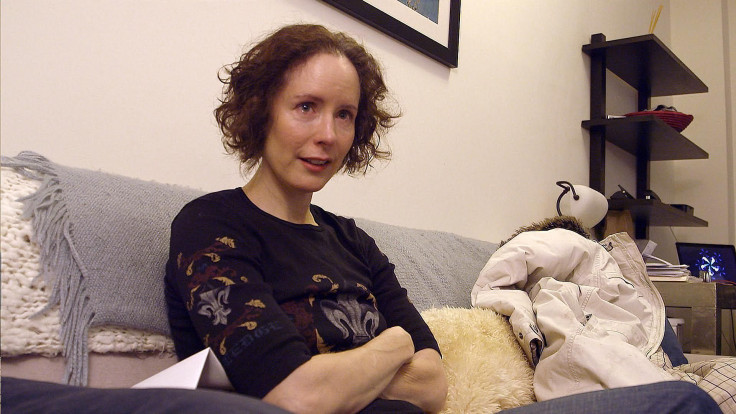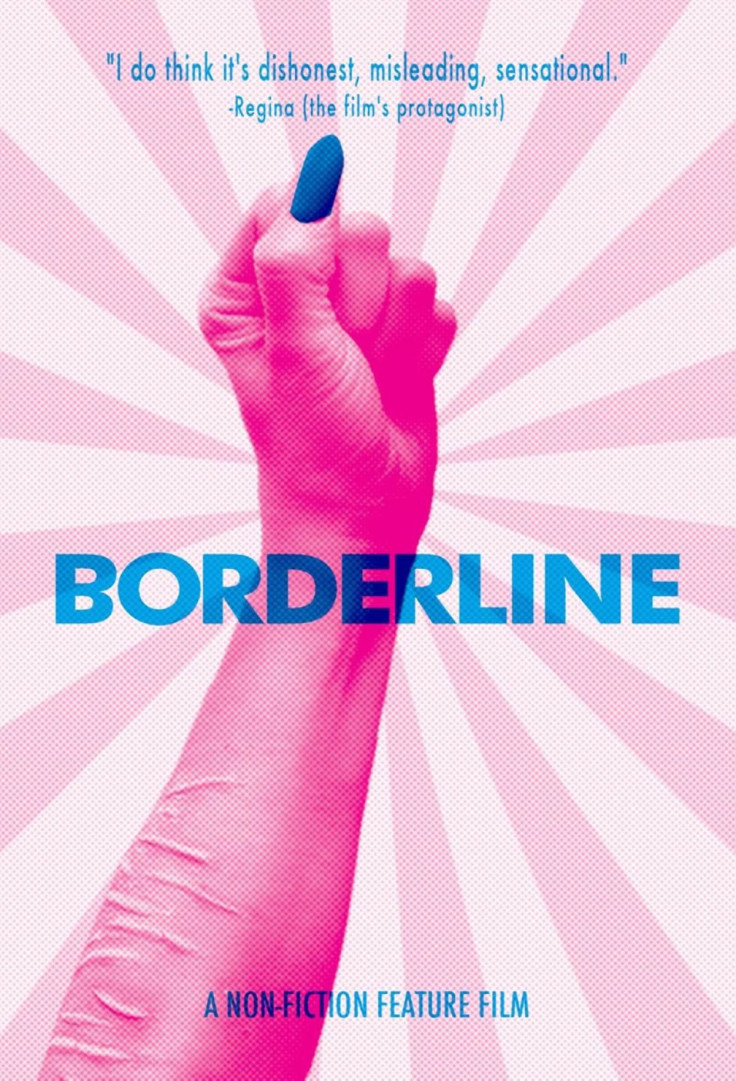Living With Borderline Personality Disorder: Why Director Rebbie Ratner Explores BPD In Documentary

Filmmaker Rebbie Ratner spent nearly four decades uncertain about her mental health. It took 10 years to get a name for her psychiatric ailment, but her journey had just begun. That’s because Ratner has borderline personality disorder, one of the most complex mental illnesses to treat.
As Ratner searched for help, she unearthed a world of misinformation. People who sought treatment for borderline personality disorder were being delivered incorrect information and Ratner felt compelled to change that. To cope with her diagnosis and quash misunderstandings, Ratner created the film, “Borderline,” which premiered at DOC NYC, America’s largest documentary festival, last week.
Borderline personality disorder (BPD) is a serious mental illness that manifests itself through unstable moods, functions, behavior and self-image, according to the National Alliance on Mental Illness (NAMI). It is colloquially known as borderline or BPD.
“Borderline” isn't about Ratner. It follows Regina, a 45-year-old New Yorker living with the disorder. The audience experiences Regina’s impulsive behavior, volatile relationships and desperate attempt to connect with others as she manages and seeks treatment for her disorder.
At least 1.6 percent of the population suffers from borderline personality disorder, but it could be as high as 5.9 percent, NAMI reports. Up to 75 percent of people diagnosed with borderline personality disorder are women, but that could be because in the past men were more likely to be misdiagnosed with PTSD or depression, recent research suggests.

At its core, “Borderline” is a nuanced film that makes the audience leave their previous predispositions about the disorder at the door. Despite the serious subject matter, “Borederline” can be funny. In one scene, after getting fat removed from her eyelids, Regina muses about how men aren’t held to the same beauty standards as women.
“I don’t understand why women have to be degraded by the aging process and men don’t,” she says while healing from her surgery. “Of course, as I say that, I just got a procedure to eradicate part of the aging process. So I will admit to buying into it completely.”
Of course, as I say that, I just got a procedure to eradicate part of the aging process. So I will admit to buying into it completely.
Insecurity is just one of the flurry of symptoms a person with borderline can suffer from. There is also impaired social relationships, impulsivity, emotional instability and feelings of worthlessness.
“People will BPD are expert emotional avoiders,” Ratner told International Business Times in a phone interview Wednesday. “They don’t have the capacity to develop a tolerance for uncomfortable feelings.”
It’s why people with the disorder cut typically themselves or numb with alcohol or drugs. “There is a compulsion to manage discomfort,” Ratner said. “People might cut or drink to mask sadness, shame or anger.”
In the film, Regina struggles with wanting to draw her own blood to feel better. “A few weeks ago I was thinking of just taking a razor and going all the way down my arm,” she says. “I don’t have very good problem solving skills.”

As they struggle internally, people with borderline typically have a hard time maintaining a job. When Ratner was searching for her “Borderline” protagonist, she knew exactly where to look: Craigslist.
“I was desperate,” Ratner said, explaining she put an ad in the “Jobs Wanted” section. “A lot of people who have the diagnosis have trouble finding employment, so it was a happy accident. It wasn’t a crazy place to look for people.”
Employment isn’t the only problem for people with borderline. Interpersonal relationships can also be an issue.
“Everything you do is pathologized once you have a diagnosis,” Regina says in the film about having a significant other. “And everything they do is perfect and they’re victims of your pathology.”
Part of the stigma that is associated with borderline could come from the name itself, Randy Wolbert, a board certified clinician in dialectical behavior therapy, told International Business Times in a phone interview Wednesday. “[Borderline personality disorder] is an artifact rom a lot of years ago,” Wolbert said.

Borderline gets its name from American psychoanalyst Adolph Stern in 1938. It was first believed patients were on the border of neurosis and psychosis. As it became better understood, borderline was eventually acknowledged as its own disorder.
But changing the name wouldn’t cure borderline’s reputation. “If they change the name of the disorder, it would still be stigmatized. Misconceptions about the disorder and fears patients and treaters might have [would remain],” Kenneth N. Levy, licensed psychologist and professor at Penn State University, told International Business Times in a phone interview Wednesday. “We really need to educate patients, treaters and the general public about the problem and how to best help the individuals.”
Although once erroneously thought of as untreatable, there is hope for people who have borderline. “There are a number of treatments that are remarkably helpful. More helpful than we realized,” Levy said. “A good portion of their symptoms will dissipate, their functions will improve and we can reduce suicidality.”
Regina began to seek treatment after she attempted suicide 5 years ago. She was 5 years old when she tried to kill herself the first time. People with borderline have an 8 to 10 percent rate of death by suicide, Substance Abuse and Mental Health Services Administration reports, which is 50 times higher than the general public. Over 70 percent of people with borderline attempt suicide at least once.

To reduce the chance of suicide and erratic behavior, borderline patients can be over overprescribed medication. This is known as polypharmacy, or taking multiple prescription drugs to treat a single condition or ailment.
Regina divulges how many different medications she’s on when she’s preparing to get her eyelid surgery. She tries to get more Vicodin since she has a “high tolerance” to medication.
Patients who have borderline display symptoms that are present in other disorders. Depression, anxiety and mood swings are just some of them. Instead of treating the illness as a whole, some doctors will treat the “problem du jour”: An antidepressant for depression, a benzodiazepine (like Xanax) for anxiety and lithium for the mood swings.
“You have this complex cocktail of medications that isn’t always helpful,” Levy said.
While medication can help a patient be less depressed or less anxious, therapy is the best way to treat the disorder. “Monotherapy is better than polypharma therapy,” Levy added.
Awareness of borderline can also help, Frank Yeomans, clinical associate professor of psychiatry at the Weill Medical College of Cornell University, told International Business Times Wednesday.
He praised Ratner's film. “I hope it brings some public attention to a much overlooked problem that people should be aware of. It affects so many families,” he said. “[The borderline community] is an underserved population and it's misunderstood condition.”

© Copyright IBTimes 2024. All rights reserved.












